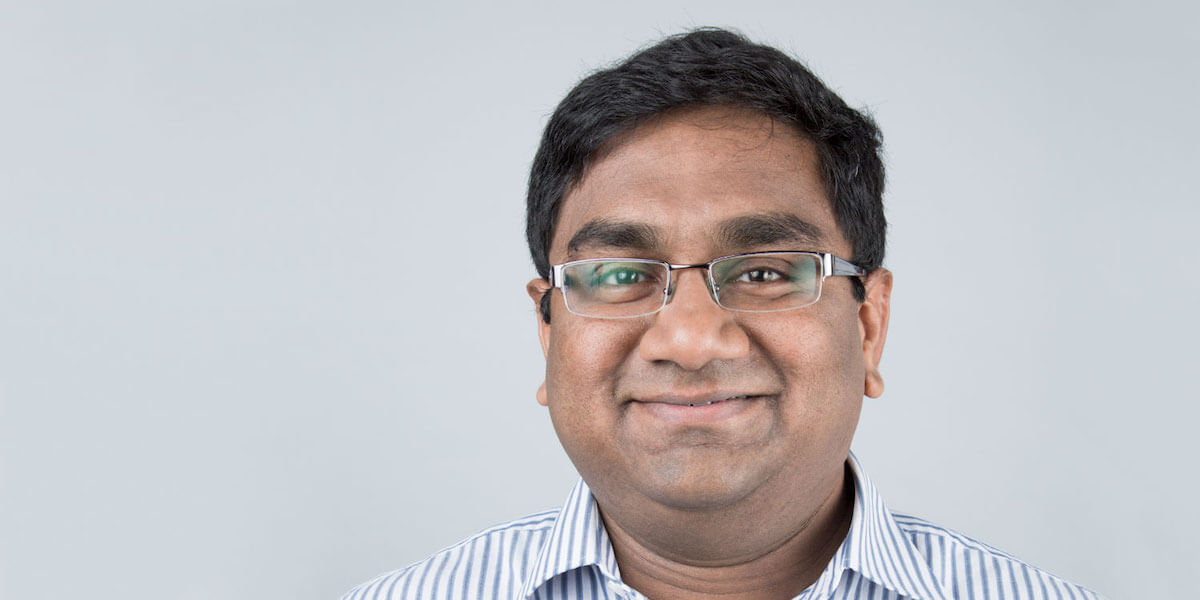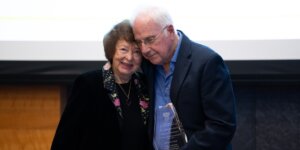
A new center to develop advanced materials will be led by Jayakanth Ravichandran, assistant professor of chemical engineering and materials science.
USC Viterbi School of Engineering will lead a multi-institution center to develop new materials with applications in areas spanning secure communication, sensing, and memory and storage, thanks to $3.75M in Department of Defense funding support.
The new research program, funded through the highly-competitive Multidisciplinary University Research Initiative (MURI), will be led by Jayakanth Ravichandran, assistant professor in USC Viterbi’s Mork Family Department of Chemical Engineering and Materials Science. Ravichandran will work with collaborators from Massachusetts Institute of Technology, Washington University ‐ St. Louis, Columbia University and University of Washington, Seattle.
The MURI-funded center—supported through the Army Research Office—will be funded at $1.25M per year over two years, with the option for an additional year following review of the program.
The research will examine a new class of materials that can be formed from a unique arrangement of positive and negative charges—or dipoles—which will allow the material to have new functionalities. These unconventional charge arrangements have recently been achieved in oxides—materials containing oxygen—that are insulating in nature.
Ravichandran and his collaborators will study semiconducting materials containing sulfur and selenium—chalcogenides—where a similar charge pattern is expected to occur. Compared to oxides, the chalcogenides are highly responsive to visible light, which significantly expands the applications of materials formed with this structure.
“Ferroelectric oxides—where these dipoles repeat in a linear pattern to form an ordered structure—have been studied for a range of applications from memory and storage in computing, sensors and energy conversion,” Ravichandran said. “For many years, the goal has been to maximize the dipole moment— the product of the charge and distance separating the charges—to achieve greater performance in these applications. Recently, there has been an interest in realizing repeating patterns with a non-linear arrangement of the dipoles”
Ravichandran said that the researchers at the MURI center would be investigating how these charges can be arranged in a non-linear alignment, especially in a circular pattern. When this circular charge can be produced in a repeating pattern in a material, a wide-range of high-tech applications can be derived from this platform, from enhanced memory storage—to secure communication and sensing applications.
“Light has a property called polarization, which decides whether the electric field associated with it is moving in a linear (linear polarization) or circular manner (circular polarization). Materials with circular dipole arrangement can be used to sense light of a very specific character,” Ravichandran said.
One of the researchers in the new center, Robert G. and Mary G. Lane Endowed Early Career Chair Han Wang said that if the polarization—or wavelength direction—of light can be controlled, this would offer infinite possibilities for encoding information and receiving and transmitting securely.
“You can send information and gather information in a very secure manner, you can enable a larger electromechanical response and you can achieve larger memory, storage and other possibilities.” Wang said.
“Imagine there is a situation where a drone has to identify itself as belonging to us, not an enemy,” Ravichandran said. “It can send this very specific type of signal that only we can detect because of the control over the polarization of the light that it emits.”
Ravichandran said the research team was hoping to introduce control of polarization in the infrared energies, which could be used to improve sensing and communication through obstructions such as fog.
USC Viterbi Dean Yannis C. Yortsos said the new award is another one in the long track record of MURI-funded centers at USC Viterbi.
“What is quite special about this award is that it will be led by Assistant Professor Jay Ravichandran, thereby underlining his rapidly rising leadership in materials research, as well as the strength of USC Viterbi junior faculty,” Yortsos said.
“The chalcogenide materials system proposed by the USC team to study the polar textures is novel and we look forward to learning more about the advances in this area to impact future DoD applications in sensing and data storage,” said Pani Varanasi, program manager, ARO, an element of the U.S. Army Combat Capabilities Development Command’s Army Research Laboratory.
Published on September 1st, 2021
Last updated on December 7th, 2021













